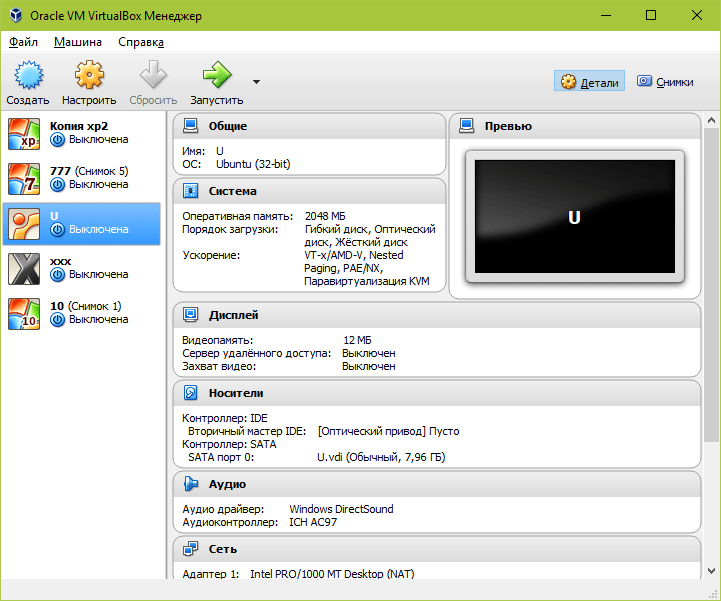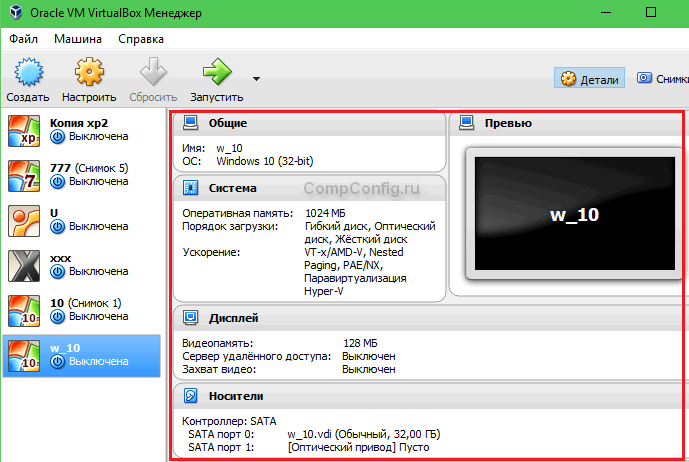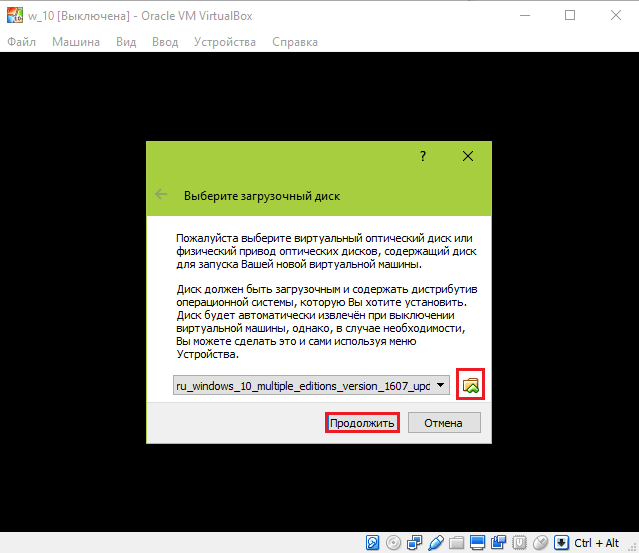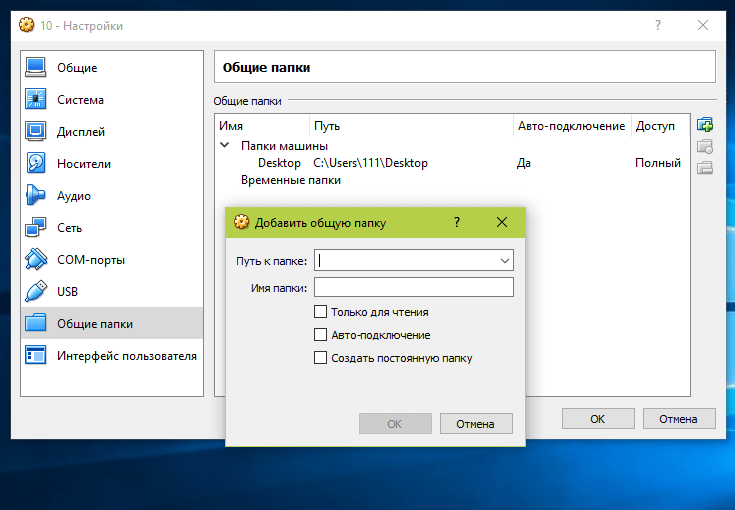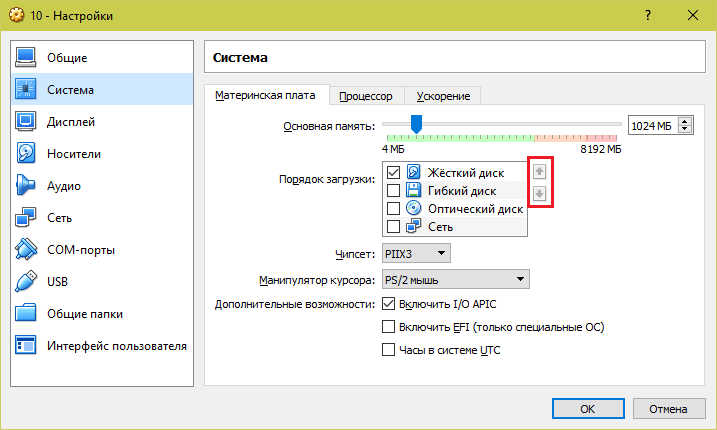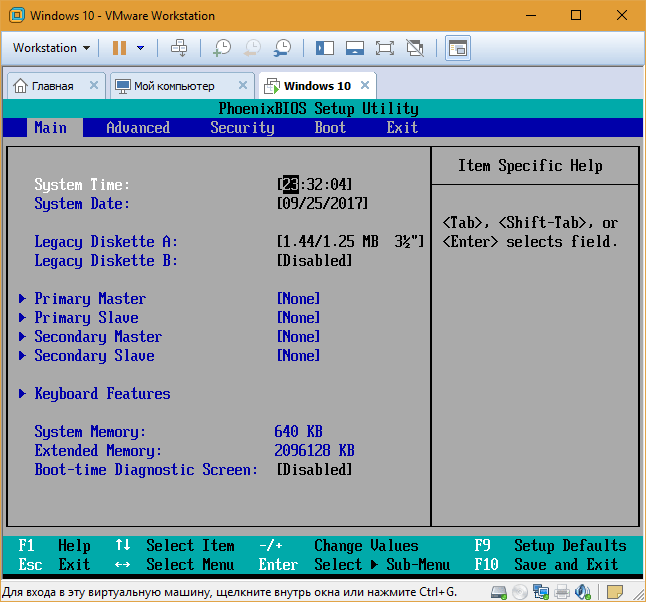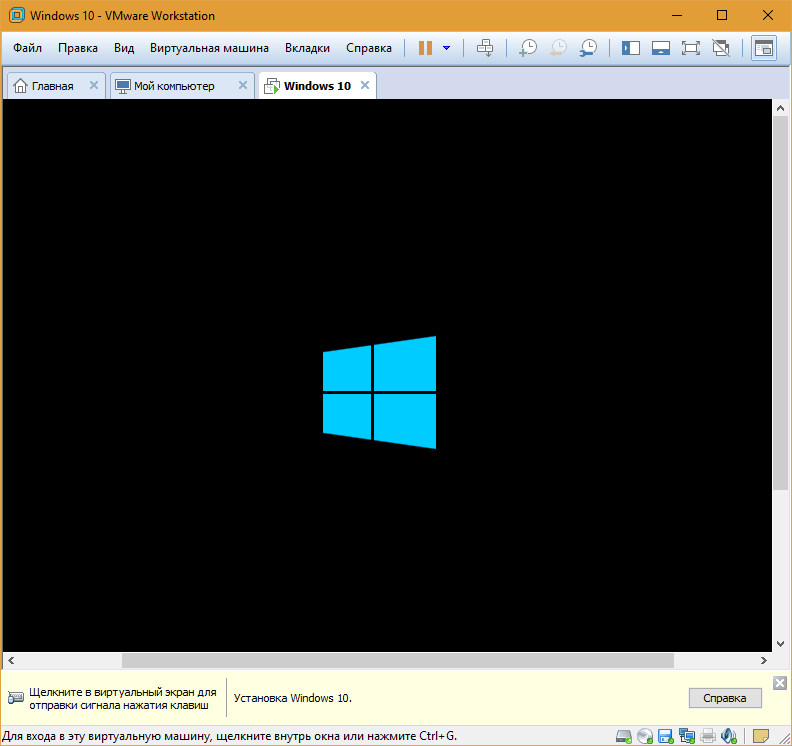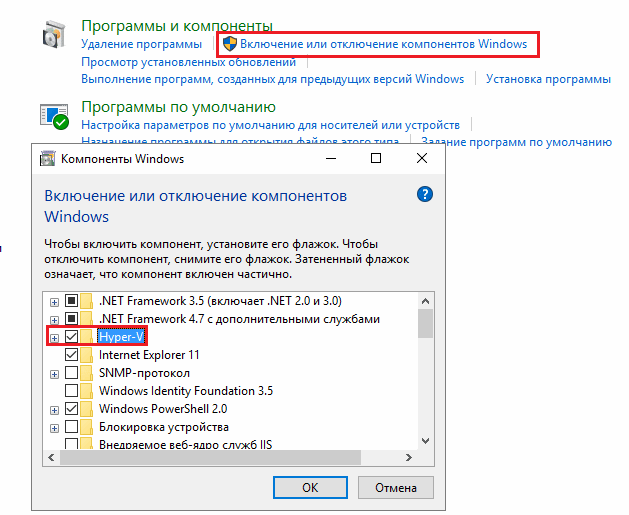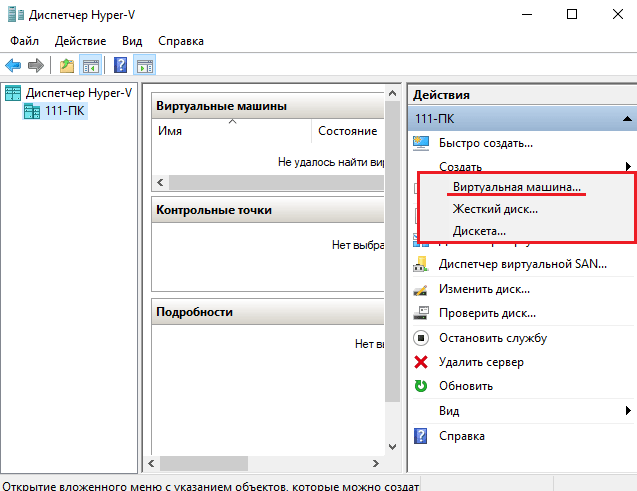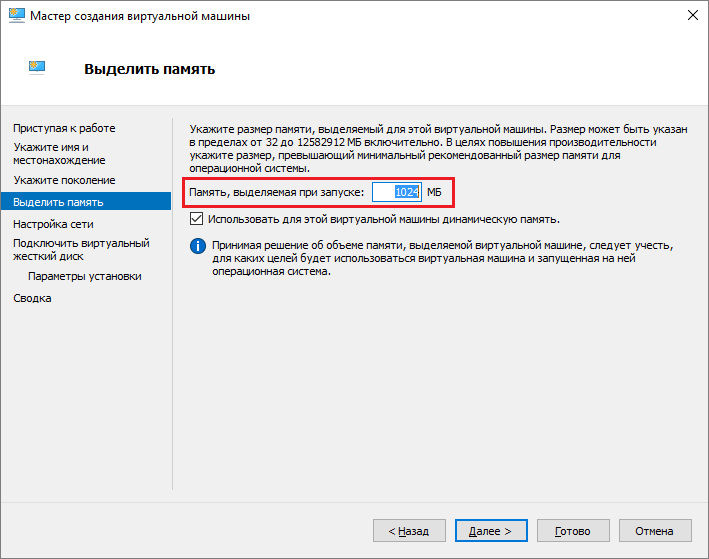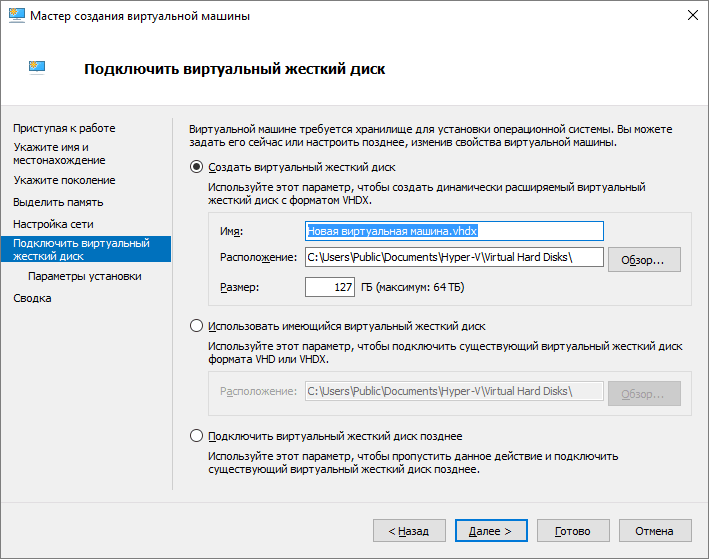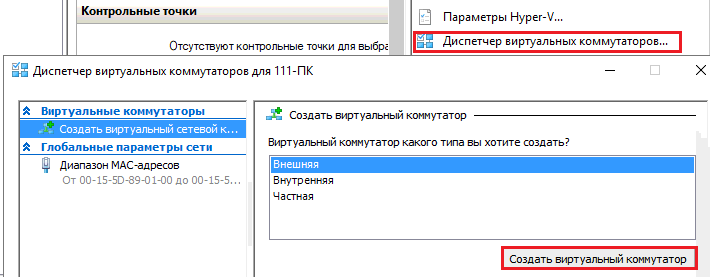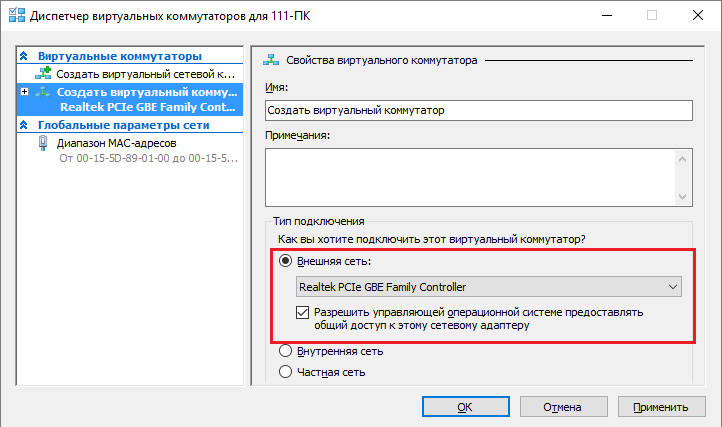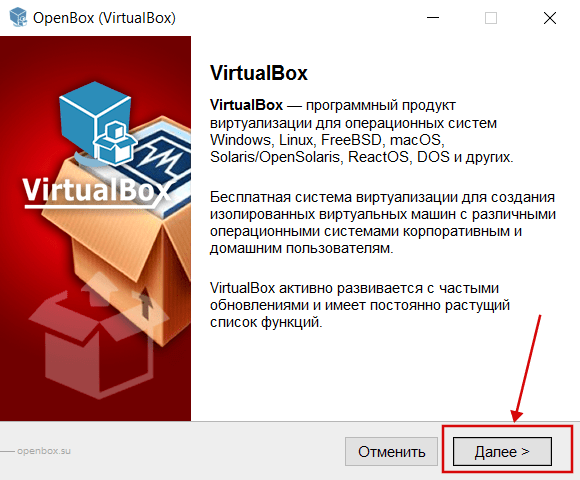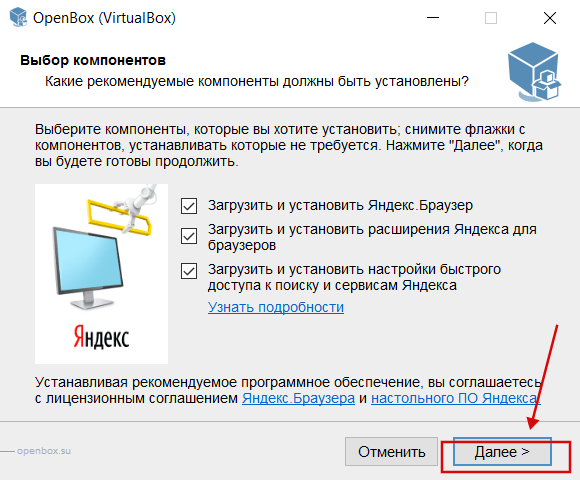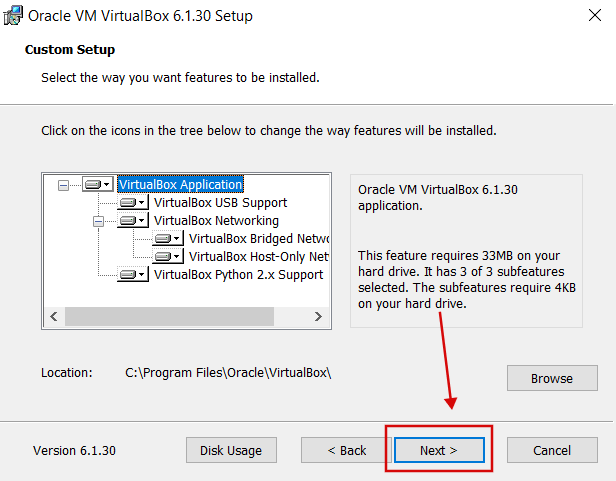Чтобы иметь под рукой сразу несколько операционных систем с отдельным рабочим пространством и приложениями, не нужно покупать второй (третий, четвертый и т. д.) компьютер. Потому что всё это уместится в вашем единственном ПК. Как? Благодаря виртуальным машинам (ВМ) — особым программам, которые создают (эмулируют) внутри основной операционной системы воображаемые (виртуальные) компьютеры.
Виртуальный ПК почти как настоящий. У него есть собственный процессор, память, жесткий диск, сетевой адаптер и всё остальное. Конечно, это не физические устройства, но сделаны они так, чтобы операционные системы считали их именно такими — настоящими.
На одном физическом компьютере одновременно может работать несколько виртуальных. Сколько именно — зависит от аппаратных ресурсов: чем шустрее процессор, объемнее оперативка, просторнее накопитель, тем больше. Обычный домашний ПК средней производительности на базе Windows 10 справляется с одновременной работой трех-пяти легковесных ОС (например, Windows XP, Android и Lubuntu + основная система). Или двух-трех относительно тяжеловесных (например, основная Windows 10 + виртуальные Windows 7 и Mac OS X). Как вы уже поняли, приложения-эмуляторы виртуальных компьютеров позволяют устанавливать и запускать на них самые разные ОС.
Содержание
- Для чего используются виртуальные машины
- Oracle Virtualbox
- Некоторые настройки ВМ и гостевой системы
- VMware Workstation Pro
- Некоторые опции виртуальной машины VMware
- Microsoft Hyper-V
- Некоторые опции виртуальных машин Hyper-V
Для чего используются виртуальные машины
Виртуальные машины общего назначения (в отличие от специализированных — таких, как, например, VM Java), используют:
- Для запуска приложений, которые не поддерживает основная система.
- Для защиты системы от потенциального вреда непроверенных программ.
- Как дополнительную преграду от вирусов при посещении сомнительных веб-ресурсов.
- Для создания изолированной среды для изучения деятельности вредоносного ПО.
- В качестве тестового полигона для отладки собственных разработок.
- Для освоения технологий построения сетей.
- Для двойной авторизации на некоторых игровых порталах и многого другого.
Ну и конечно, виртуальные машины повсеместно используют для распределения рабочих ресурсов серверов.
Сегодня мы не будем касаться промышленного применения ВМ, а рассмотрим только то, что может быть полезно домашним пользователям ОС Windows.
Oracle Virtualbox
Виртуальная машина Oracle Virtualbox, пожалуй, наиболее известна и популярна у домашних пользователей ПК. Она русифицирована, бесплатна, поддерживает все основные операционные системы, включая Android, и довольно проста в применении. Сделать минимально необходимые настройки и установить в нее операционную систему сможет даже слабо подготовленный юзер, если имеет под рукой инструкцию по установке выбранной ОС.
Даже беглого взгляда на рабочую область Virtualbox достаточно, чтобы понять, что здесь к чему и как примерно пользоваться программой. Слева — список всех операционных систем, установленных на платформу Virtualbox (гостевых), справа — окно параметров виртуального компьютера выбранной из списка ОС или окно снимков — сохраненных состояний этой системы (некий аналог точек восстановления). На верхней панели — основные инструменты управления: кнопки мастера создания новой ВМ, перехода в меню настроек и запуска ВМ. Вверху справа — кнопки переключения вкладок левой части окна (на скриншоте показана вкладка настроек).
Освоить основные функции программы — установку и запуск операционной системы, настройку параметров виртуального компьютера, большинству пользователей удается без инструкций. А для самых пытливых умов, стремящихся постичь все секреты Virtualbox, на официальном сайте есть англоязычный учебник.
Рассмотрим процесс создания новой виртуальной машины и начало установки в нее Windows 10.
- Кликнем в верхней панели кнопку «Создать».
- В первом окошке мастера создания ВМ укажем имя ОС (оно будет отображаться в списке гостевых систем), ее тип (Windows, Linux и т. д.) и версию. В нашем примере это Windows 10 32 bit (можно поставить и 64 bit, но ей потребуется больше ресурсов). Для перехода к следующему шагу нажмем Next.
- Дальше укажем размер оперативной памяти ВМ. По умолчанию Windows 10 x86 отводится 1 Гб, но вы можете увеличить этот объем, сдвигая ползунок вправо. Если на вашем ПК не очень много оперативки, не отдавайте ВМ больше 2-3 Гб, иначе основная система будет тормозить из-за нехватки памяти.
- Следом создаем виртуальный жесткий диск. Если вы ставите систему первый раз, выбирайте вариант «Создать новый».
- Тип виртуального диска оставим по умолчанию.
- Формат хранения данных — это область на физическом накопителе вашего компьютера, который отводится ВМ. Она может иметь постоянный или динамически расширяемый объем в тех пределах, которые вы определите дальше. Для экономии места выберем динамический формат.
- Следом укажем имя тома (виртуального диска С) и его размер. По умолчанию — 32 Гб.
- После нажатия в последнем окошке кнопки «Создать» в списке появится новая виртуальная машина. Справа в рамке показаны ее параметры.
- Для перехода к установке Windows кликнем в верхней панели кнопку «Запустить».
- В окне, которое откроется после этого, появится окошко «Выберите загрузочный диск». Нажмите на иконку папки и укажите путь к дистрибутиву системы. Это может быть образ в формате .iso или физический носитель (DVD, флешка). Выбрав дистрибутив, нажмите «Продолжить».
- Дальнейший ход инсталляции ОС в виртуальную машину не отличается от установки ее на физический компьютер.
Некоторые настройки ВМ и гостевой системы
Клик в окне виртуальной машины захватывает курсор мыши (т. е. он будет двигаться только в пределах виртуального экрана). Для возврата курсора в основную ОС нажмите комбинацию Ctrl+Alt.
Для доступа ко всему набору функций гостевой ОС нужно установить специальные дополнения. Зайдите в меню «Устройства», щелкните «Подключить образ диска дополнений гостевой ОС» и следуйте дальнейшим инструкциям.
Чтобы подключить к гостевой системе папку для обмена файлами с основной, кликните в меню «Устройства» пункт «Общие папки». Нажмите на значок «папка+» в открывшемся окне и через поле «путь к папке» укажите ее в проводнике (в нем показаны каталоги основной системы).
Если хотите, чтобы настройка работала постоянно, отметьте «Авто-подключение» и «Создать постоянную папку». Общая папка будет доступна из проводника виртуальной машины как сетевая.
Чтобы сохранить текущее состояние гостевой ОС, откройте меню «Машина» и выберите «Сделать снимок состояния».
Чтобы изменить порядок опроса загрузочных устройств (например, для загрузки виртуальной машины с DVD), завершите работу гостевой ОС, откройте ее настройки (в главном окне Virtualbox) и зайдите на первую вкладку раздела «Система». В списке «Порядок загрузки» отметьте нужный носитель и, нажимая кнопки со стрелками, передвиньте его наверх.
VMware Workstation Pro
VMware Workstation pro — не менее функциональный продукт, чем Vrtualbox, но рассчитанный на профессиональное применение и интеграцию с другими сервисами производителя. Не бесплатный и довольно дорогостоящий, однако тоже очень популярный у домашних пользователей Windows.
Бесплатная версия VMware для личного использования тоже существует. Это VMware Workstation Player, но малая функциональность, сильно уступающая даже некоммерческому Vrtualbox, отвернула от него любовь наших сограждан.
Полноценный VMware Workstation Pro, с которым мы будем знакомиться сегодня, как и конкурент, поддерживает массу операционных систем, включая мобильные и Mac OS X (кстати, он совместим с большим количеством редакций OS X, нежели Virtualbox), и эмулирует все основные устройства компьютера. Еще он эмулирует интерфейс BIOS, в отличие от Vrtualbox.
Рассмотрим, как проходит процесс создания виртуальной машины и запуск установки Windows 10 на платформе VMware Workstation Pro.
Дизайн основного окна программы (который, кстати, видоизменяется от версии к версии) не позволит запутаться даже начинающему пользователю.
- Чтобы создать новую виртуальную машину, нажмем одноименную кнопку на вкладке «Главная».
- В первом окошке мастера создания ВМ укажем тип конфигурации. Если вам нужен компьютер со стандартными параметрами (которых достаточно в 90% случаев), отметим «Обычный».
- Следом укажем тип ОС, которую будем устанавливать на эту виртуальную машину. Программа дает возможность запустить установку сразу после создания ВМ, причем без лишних действий с вашей стороны. Если вы согласны на это, укажите путь к файлу образа или носителя с дистрибутивом системы, если нет, отметьте «Я установлю систему позже».
- Чтобы не вводить ключ продукта, имя пользователя и пароль во время установки Windows, введите это данные в следующее окно. Первый пункт можно пропустить.
- Дайте новой виртуальной машине имя и укажите будущее расположение папки с операционной системой.
- Определите размер виртуального диска. По умолчанию VMware отдает Windows 10 целых 60 Гб, но мы можем увеличить или уменьшить этот объем. Следом вам предстоит указать способ сохранения виртуального диска — в одном или нескольких файлах.
- Ниже показаны параметры только что созданного виртуального компьютера. Если вас что-то не устраивает, например, размер оперативной памяти, нажмите «Настройку оборудования».
- Измените нужные характеристики, вернитесь в предыдущее окно и кликните «Готово».
- После этого, наконец, запустится установка операционной системы. Ваше участие понадобится ближе к ее окончанию — для настройки сетевого обнаружения и проверки обновлений.
- После загрузки рабочего стола программа автоматически установит в новую систему VMware Tools — то же, что и дополнения гостевой ОС в Virtualbox. После этого виртуальная машина готова к работе.
Список всех установленных гостевых операционных систем находится на вкладке «Мой компьютер».
Некоторые опции виртуальной машины VMware
До установки VMware Tools окно гостевой системы, как и в Virtualbox, захватывает курсор мыши. Для возврата его в основную ОС нажмите Ctrl+Alt.
Чтобы попасть в интерфейс BIOS виртуальной машины, выделите ее в списке, откройте меню запуска (кнопка «play» на верхней панели) и кликните «При включении (машины) войти в режим BIOS».
Microsoft Hyper-V
Диспетчер виртуальных машин Hyper-V — это встроенный компонент операционных систем всех редакций Windows 7-10, за исключением начальной и домашних. Если разобраться, он не хуже и не сложнее, чем два рассмотренных выше, просто некоторые пользователи ничего не знают о его существовании и только поэтому предпочитают сторонний софт.
Чтобы активировать диспетчер Hyper-V, зайдите в раздел приложений панели управления Windows, щелкните «Включение и выключение компонентов Виндовс» и в открывшемся окошке отметьте «Hyper-V».
Перезагрузите компьютер, откройте поиск и с его помощью запустите диспетчер Hyper-V.
- Для создания новой ВМ в панели диспетчера «Действия» нажмите «Создать» — «Виртуальная машина».
- Дайте новой виртуальной машине имя.
- Определите ее поколение — 1 (старое, к которому относится Windows XP и все 32-битные системы) или 2 (новое — 64-битные Windows 7, 8.1 или 10).
- Выделите виртуальной машине оперативную память. Флажок «Динамическая» позволит основной ОС использовать часть памяти, которая не задействована гостевой ОС, для своих нужд. Этой полезной возможности, кстати, нет ни в Virtualbox, ни в VMware.
- Настройки сети отложим на потом. Оставим по умолчанию «Нет подключения».
- Далее определим размер, расположение виртуального диска и назначаем ему имя.
- Последний шаг — параметры установки гостевой ОС. Укажем месторасположение носителя с дистрибутивом или файла образа iso. Либо отложим установку Виндовс на другое время. После нажатия кнопки «Готово» виртуальная машина будет создана, а вслед за этим запустится инсталляция операционной системы. Ее ход тоже ничем не отличается от установки ОС на реальный компьютер.
Список всех виртуальных машин Hyper-V отображается в средней части окна диспетчера. Чтобы запустить любую из них, кликните 2 раза по ее имени. В окошке, которое откроется после этого, нажмите кнопку «Пуск».
Чтобы виртуальные машины Hyper-v могли подключаться к Интернету, запустите через панель «Действия» диспетчер виртуальных коммутаторов. Выберите в показанном ниже списке тип сети «Внешняя» и нажмите «Создать виртуальный коммутатор». Сети «Внутренняя» и «Частная» предназначены для соединения виртуальных компьютеров между собой, и большинству пользователей не нужны.
На следующей странице обычно ничего менять не требуется, кроме, если хотите, имени подключения. В выпадающем списке «Внешняя сеть» должен быть указан сетевой адаптер физического компьютера, который соединен с роутером или кабелем интернет-провайдера. Ниже должен стоять флажок «Разрешить управляющей ОС предоставлять общий доступ к адаптеру» (т. е. к Интернету).
Кстати, Hyper-v поддерживает не только операционные системы семейства Windows, но и некоторых конкурентов, в частности, Linux и FreeBSD. Полный список всех совместимых с ним платформ, а также условия их использования в среде Windows, приведены на сайте MSDN.microsoft.
Некоторые опции виртуальных машин Hyper-V
Чтобы сделать снимок состояния запущенной гостевой ОС, Откройте верхнее меню ее окна «Действие» и щелкните «Контрольная точка». Либо нажмите комбинацию Ctrl+N.
Доступ к настройкам отдельной виртуальной машины открывается из ее контекстного меню в списке главного окна диспетчера и скрывается за кнопкой «Параметры».
Прочие возможности программы тоже весьма незамысловаты и осваиваются без особого труда.
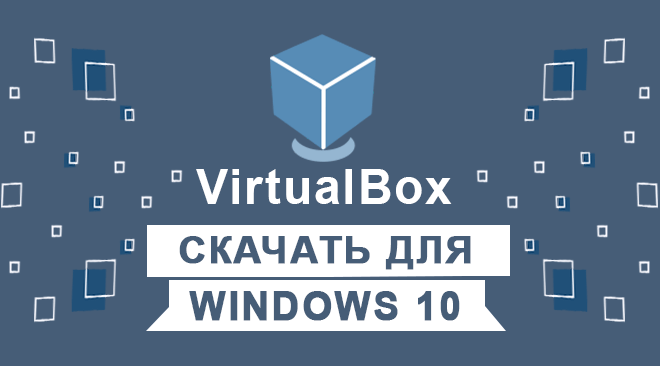 |
Категория: | Виртуальные машины |
| Поддерживаемые ОС: | Windows 10 | |
| Разрядность: | 32 bit, 64 bit, x32, x64 | |
| Для устройств: | Компьютер | |
| Язык интерфейса: | на Русском | |
| Версия: | Последняя | |
| Разработчик: | Oracle |
Не будет сложно загрузить VirtualBox для Windows 10, наверняка, много кто сталкивался с такой ситуацией, когда требуется протестировать программное обеспечение, которое кажется весьма сомнительным. Чтобы не рисковать «здоровьем» своего ПК, можно создать настоящий виртуальный компьютер на базе реального. И поможет в этом бесплатная утилита VirtualBox, подходящая для Windows 10.
Virtualbox для Windows 10 на компьютер
Виртуальная машина, создаваемая программой VirtualBox, является абсолютно идентичной домашнему компьютеру с тем лишь отличием, что на нее параллельно можно поставить любую поддерживаемую оперативную систему, включая Windows 10. При этом работать оба программных обеспечения будут совершенно отдельно друг от друга. Интерфейс утилиты Windows 10 вполне понятен — вы сможете разобраться в нем, даже если является новичком в мире ПК. Достаточно следовать советам во время установки программы, инструкция проста и приводит к самостоятельной инсталляции.
Единственное, что требуется при запуске программы VirtualBox, — выбрать операционную систему, на которой планируется работа на создаваемой виртуальной машине. Для установки необходимо наличие образа дистрибутива ОС, в данном случае, требуется образ для Windows 10. Функционал утилиты VirtualBox продуман настолько хорошо, что у вас точно не возникнет проблем с ее использованием. Можно смело устанавливать сомнительный софт на виртуальную машину, не боясь повредить ваше домашнее железо. После инсталляции программу можно протестить — виртуальной машине доступен весь функционал настоящего компьютера.
VirtualBox для версий windows:
|
|
Возможности и преимущества VirtualBox
Виртуальные машины
Снимки состояния
Простые настройки
Легкий обмен файлами
Скачать Virtualbox для Windows 10 бесплатно
| Приложение | OS | Формат | Версия | Загрузка |
|---|---|---|---|---|
| VirtualBox | Windows 10 | x32 | Бесплатно (на русском) |
Скачать ↓ |
| VirtualBox | Windows 10 | x64 | Бесплатно (на русском) |
Скачать ↓ |
| VirtualBox | Windows 10 | x32 — x64 | Бесплатно (на русском) |
Скачать ↓ |
Как установить Virtualbox для windows 10:
Запустите файл.
Ознакомьтесь с информацией и нажмите «Далее».
Нажмите «Далее», или снимите галочки с рекомендуемого ПО и нажмите «Далее». Если снять все галочки, рекомендуемое ПО не установится!
Не смотря на то что установка на английском сама программа будет на русском.
Еще один случай, когда утилита Виртуал бокс для Виндовс 10 станет незаменимой, — необходимость работы в какой-либо программе, которая может адекватно функционировать только в условиях определенной операционной системы. Переустанавливать ОС своего домашнего компьютера вам не придется — положение спасет VirtualBox, ведь при инсталляции на утилиту можно загрузить любое ПО, к примеру, Виндовс другого уровня, а также ОС Linux и другие. Виртуал Бокс позволяет создавать сразу несколько виртуальных машин, все зависит от возможностей вашего реального железа и наличия образов операционных систем для загрузки и инсталляции.
176
176 people found this article helpful
Run a different operating system in a window on your computer
Updated on November 23, 2021
We independently research, test, review, and recommend the best
products—learn more about
our process. If you buy something through our links, we may earn a commission.
Lifewire / Desing by Amelia Manley
Virtual machines emulate additional operating systems, each in individual windows, on a computer. With VM software, you can run a Windows instance on macOS or vice versa, as well as other OS combinations that include Chrome OS, Linux, and Solaris. Here are some of the best virtual machine software programs available in 2022.
The computer’s operating system is commonly referred to as the host. The secondary operating system that runs in the VM interface is often called the guest.
The Industry Standard: VMware Workstation
VMware
What We Like
-
An evaluation version is available.
-
Easy to use once it is set up.
-
Widely used and well regarded.
-
Free for personal use.
What We Don’t Like
-
Consumes a lot of resources.
-
Not all programs work in the emulation.
-
The default configuration may require changes.
With almost 20 years on the market, VMware Workstation is often considered the industry standard for virtual machine applications. Its robust set of functions covers many virtualization needs.
It permits advanced 3D solutions by supporting DirectX 11 and OpenGL 4.1, eliminating image and video degradation within the VMs even when using graphics-intensive applications. The software allows for virtual machine open standards, providing the ability to create and run VMs from competing vendors within the VMware product.
Its advanced networking features let you set up and administer elaborate virtual networks for VMs. Its complete data center topologies can be designed and implemented when VMware is integrated with external tools — essentially emulating an entire enterprise DC.
You can use VMware snapshots to set rollback points for testing. Its cloning system makes deploying multiple instances of a similar VM a breeze. With multiple VMs, you can choose between fully isolated duplicates or linked clones that rely partially on the original to save hard drive space.
The package integrates seamlessly with vSphere, the VMware enterprise server virtualization product, resulting in the easy administration of all VMs in a company’s data center remotely from the local machine.
There are two versions of the application: Workstation Player and Workstation Pro.
Player is free to use. It allows you to create new VMs and supports over 200 guest operating systems. It also allows for file sharing between the host and guest, features the graphical advantages mentioned above, and supports 4K displays.
The free version falls short on VMware’s advanced functionality, such as running more than one VM at a time and accessing abilities like cloning, snapshots, and complex networking.
Workstation Player is restricted from commercial use. Businesses looking to utilize the Workstation software must purchase one or more Pro licenses to use the application beyond the trial period.
For these features, and to create and manage encrypted virtual machines, purchase VMware Workstation Pro. The Pro version includes Unity Mode for Mac users, which hides the Windows interface, and lets you use the Dock to launch Windows applications.
VMware Station is compatible with the following host platforms:
- Most 64-bit Linux distributions.
- Windows 7 and above (64-bit only).
- Windows Server 2008 R2 and above.
Get VMware Workstation Pro
Best for Mac Users: VMware Fusion
VMware Fusion
What We Like
-
Brings the VMware emulation capabilities to macOS.
-
The basic version, Fusion Plauer is free.
-
Supports a range of macOS displays.
-
Uses the same virtual machines as non-Mac VMware products.
What We Don’t Like
-
Not as full-featured as Parallels.
-
Can be sluggish.
Create a New Virtual Machine With VMware’s Fusion
Created by the same people who created VMware Workstation for Linux and Windows, Fusion ports basically the same experience Workstation offers to the Mac platform.
Similar to VMware Workstation, Fusion Player is free for personal use. Fusion Pro can be purchased for business purposes or individuals who require access to the advanced feature sets.
It does have some Mac-specific functionality, such as support for 5K iMac displays, mixed retina, and non-retina configurations. Fusion includes Unity Mode, which hides the Windows desktop interface and lets you launch Windows applications from the Dock as if the apps are regular apps to macOS.
The free and paid versions of Fusion can run Windows from a Boot Camp partition as a guest VM instance, eliminating the need for a reboot when you switch back and forth.
VMware Fusion is compatible with the following host platforms:
- macOS/OS X 10.13 and above.
Get VMware Fusion
Best Free Option: Oracle VM VirtualBox
Oracle
What We Like
-
The base version is free.
-
An intuitive interface and operation.
-
It’s stable.
What We Don’t Like
-
Requires a solid hardware setup with ample RAM for efficient performance.
-
Additional features require a download of Guest-addition software.
First released in 2007, this open-source hypervisor is available for home and enterprise use at no charge.
The extensions pack, which includes USB support and other basic features, is only free for personal use.
VirtualBox supports several guest operating systems, including all Windows versions ranging from XP to 10, Windows NT, and Windows Server 2003. It can run VMs with Linux 2.4 and above, Solaris, OpenSolaris, and OpenBSD. You also can turn back the clock and run OS/2 or DOS/Windows 3.1, whether for nostalgic purposes or to play old favorites like Wasteland or Pool of Radiance in the games’ natural environments.
You can also run macOS in a VM using VirtualBox. However, this feature only works if the host operating system is also on a Mac.
Apple doesn’t allow macOS to function on non-Apple hardware. You cannot legally run macOS in a virtual machine unless the host environment is macOS.
VirtualBox runs several guest windows simultaneously and provides a level of portability. A VM created on one host can be transferred to another host with a different operating system.
It runs on older hardware, recognizes most USB devices, and offers a library of Guest Additions that are free and easy to install. These added features include the ability to transfer files and clipboard contents between the host and guest operating systems, 3D virtualization, and video support to alleviate common problems with visuals on a VM.
The product’s website provides several tutorials and a set of canned virtual machines that are custom-made to meet specific development needs.
Oracle VM VirtualBox has an expanding developer community that publishes new releases regularly and an active user forum with almost 100,000 registered members. VirtualBox’s track record assures it will continue to improve and serve as a long-term VM solution.
VirtualBox is compatible with the following host platforms:
- Most Linux distributions.
- macOS/OS X 10.13 and above.
- Solaris 11 and above.
- Windows 8.1, Windows 10, Server 2012, Server 2012 R2, Server 2016, and 2019.
Get Oracle VirtualBox
Best for Running Windows and macOS: Parallels Desktop
Parallels
What We Like
-
Runs Windows, Chrome OS, Linux, and a second instance of macOS.
-
Three versions to suit different applications.
-
A complement of features, with the ability to monitor and adjust memory usage.
-
Allows the MacBook Pro Touch Bar to work in Windows.
What We Don’t Like
-
Considerable resource consumption.
-
Adjustments aren’t always intuitive.
-
The subscription pricing model means users must upgrade yearly.
Optimize Parallels Desktop – Parallels Guest OS Optimization
A long-time favorite of Mac enthusiasts who occasionally need to run Windows, Parallels seamlessly runs Windows and Mac applications side-by-side.
Based on your primary use for Windows, Parallels optimizes system and hardware resources for a Windows experience that feels like an actual PC.
Parallels offers most of the features found in a paid VM product and many features specific to the Mac, such as opening websites in IE or Edge from a Safari browser and Windows alerts displaying in the Mac Notification Center. Files can be dragged between the two operating systems, as well as clipboard content. A dedicated cloud storage space is included with Parallels, and it can be shared across macOS and Windows.
A common misconception about Parallels is that it can only be used for Windows in a guest VM. It permits you to run Chrome OS, Linux, and another instance of macOS.
There are three versions of Parallels available, each suited for a particular audience. Use the standard edition if you are switching from a PC to a Mac for the first time or use Windows applications on a regular basis. It contains the basic toolset along with 8 GB of VRAM and 4 vCPUs for each guest VM. It costs a one-time fee of $79.99.
The Pro Edition, aimed at software developers, testers, and other power users, integrates with Microsoft Visual Studio and well-known developer and QA tools such as Jenkins. It has round-the-clock email and phone support, advanced networking tools, and the ability to utilize business cloud services. It has 128 GB of vRAM and 32 vCPUs for every VM. Parallels Desktop Pro Edition is available for $99.99 per year.
The Business Edition includes all of the above, along with centralized administration and management tools. It also has a volume license key that allows you to roll out and control Parallels instances across departments and organizations. Parallels Desktop Business Edition costs $99.99 a year.
Parallels is compatible with the following host platforms:
- macOS/OS X 10.13 and above.
Get Parallels
Best for (Some) Windows 10 Users: Hyper-V Manager
Microsoft
What We Like
-
Free and installed in supported versions of Windows 10.
-
Robust performance with deep hooks into the host OS.
What We Don’t Like
-
Not available on Windows 10 Home.
-
Deep hooks mean other VM solutions can’t run simultaneously.
Microsoft includes Hyper-V Manager for professional, enterprise, or academic versions of Windows 10. As a built-in feature, it supports deep linking within the Windows 10 host operating system and a range of guest OSes, including various versions of Windows, Linux, and old systems like MS-DOS.
Microsoft offers a free developer version of Windows 10 for Hyper-V Manager, fully licensed for use within the virtual environment.
If you run Windows 10 Pro, Enterprise, Education, or Windows 8 (and 8.1) Pro or Enterprise, check out this full-featured, powerful hypervisor.
Activate Hyper-V on Windows 10
Best for Linux Users: QEMU
QEMU
What We Like
-
It’s free.
-
Functions as a virtual machine host and a machine emulator.
-
Emulates a range of machines.
What We Don’t Like
-
Has a dated and confusing interface.
QEMU is frequently the hypervisor of choice for Linux users, based on its zero-dollar price tag and easy-to-perfect full-system emulation tools. The open-source emulator simulates a range of hardware peripherals, using dynamic translation for ideal performance.
Running KVM virtual machines when using QEMU as a virtualizer can result in near-parity performance on the right hardware, making you almost forget that you’re using a VM.
Administrative privileges are only required in certain scenarios with QEMU, such as when you need to access USB devices from within a guest VM. This is rare with this type of software, adding some flexibility to the ways you can use it.
Custom builds of QEMU are available for macOS and Windows. However, the majority of its user base tends to have Linux computers as the host.
QEMU is compatible with the following host platforms:
- Most Linux distributions.
- macOS 10.5 or above (10.7 recommended) through the Homebrew package manager.
- 32-bit Windows and 64-bit Windows (newer versions no longer work with Windows XP).
Visit QEMU
Thanks for letting us know!
Get the Latest Tech News Delivered Every Day
Subscribe
176
176 people found this article helpful
Run a different operating system in a window on your computer
Updated on November 23, 2021
We independently research, test, review, and recommend the best
products—learn more about
our process. If you buy something through our links, we may earn a commission.
Lifewire / Desing by Amelia Manley
Virtual machines emulate additional operating systems, each in individual windows, on a computer. With VM software, you can run a Windows instance on macOS or vice versa, as well as other OS combinations that include Chrome OS, Linux, and Solaris. Here are some of the best virtual machine software programs available in 2022.
The computer’s operating system is commonly referred to as the host. The secondary operating system that runs in the VM interface is often called the guest.
The Industry Standard: VMware Workstation
VMware
What We Like
-
An evaluation version is available.
-
Easy to use once it is set up.
-
Widely used and well regarded.
-
Free for personal use.
What We Don’t Like
-
Consumes a lot of resources.
-
Not all programs work in the emulation.
-
The default configuration may require changes.
With almost 20 years on the market, VMware Workstation is often considered the industry standard for virtual machine applications. Its robust set of functions covers many virtualization needs.
It permits advanced 3D solutions by supporting DirectX 11 and OpenGL 4.1, eliminating image and video degradation within the VMs even when using graphics-intensive applications. The software allows for virtual machine open standards, providing the ability to create and run VMs from competing vendors within the VMware product.
Its advanced networking features let you set up and administer elaborate virtual networks for VMs. Its complete data center topologies can be designed and implemented when VMware is integrated with external tools — essentially emulating an entire enterprise DC.
You can use VMware snapshots to set rollback points for testing. Its cloning system makes deploying multiple instances of a similar VM a breeze. With multiple VMs, you can choose between fully isolated duplicates or linked clones that rely partially on the original to save hard drive space.
The package integrates seamlessly with vSphere, the VMware enterprise server virtualization product, resulting in the easy administration of all VMs in a company’s data center remotely from the local machine.
There are two versions of the application: Workstation Player and Workstation Pro.
Player is free to use. It allows you to create new VMs and supports over 200 guest operating systems. It also allows for file sharing between the host and guest, features the graphical advantages mentioned above, and supports 4K displays.
The free version falls short on VMware’s advanced functionality, such as running more than one VM at a time and accessing abilities like cloning, snapshots, and complex networking.
Workstation Player is restricted from commercial use. Businesses looking to utilize the Workstation software must purchase one or more Pro licenses to use the application beyond the trial period.
For these features, and to create and manage encrypted virtual machines, purchase VMware Workstation Pro. The Pro version includes Unity Mode for Mac users, which hides the Windows interface, and lets you use the Dock to launch Windows applications.
VMware Station is compatible with the following host platforms:
- Most 64-bit Linux distributions.
- Windows 7 and above (64-bit only).
- Windows Server 2008 R2 and above.
Get VMware Workstation Pro
Best for Mac Users: VMware Fusion
VMware Fusion
What We Like
-
Brings the VMware emulation capabilities to macOS.
-
The basic version, Fusion Plauer is free.
-
Supports a range of macOS displays.
-
Uses the same virtual machines as non-Mac VMware products.
What We Don’t Like
-
Not as full-featured as Parallels.
-
Can be sluggish.
Create a New Virtual Machine With VMware’s Fusion
Created by the same people who created VMware Workstation for Linux and Windows, Fusion ports basically the same experience Workstation offers to the Mac platform.
Similar to VMware Workstation, Fusion Player is free for personal use. Fusion Pro can be purchased for business purposes or individuals who require access to the advanced feature sets.
It does have some Mac-specific functionality, such as support for 5K iMac displays, mixed retina, and non-retina configurations. Fusion includes Unity Mode, which hides the Windows desktop interface and lets you launch Windows applications from the Dock as if the apps are regular apps to macOS.
The free and paid versions of Fusion can run Windows from a Boot Camp partition as a guest VM instance, eliminating the need for a reboot when you switch back and forth.
VMware Fusion is compatible with the following host platforms:
- macOS/OS X 10.13 and above.
Get VMware Fusion
Best Free Option: Oracle VM VirtualBox
Oracle
What We Like
-
The base version is free.
-
An intuitive interface and operation.
-
It’s stable.
What We Don’t Like
-
Requires a solid hardware setup with ample RAM for efficient performance.
-
Additional features require a download of Guest-addition software.
First released in 2007, this open-source hypervisor is available for home and enterprise use at no charge.
The extensions pack, which includes USB support and other basic features, is only free for personal use.
VirtualBox supports several guest operating systems, including all Windows versions ranging from XP to 10, Windows NT, and Windows Server 2003. It can run VMs with Linux 2.4 and above, Solaris, OpenSolaris, and OpenBSD. You also can turn back the clock and run OS/2 or DOS/Windows 3.1, whether for nostalgic purposes or to play old favorites like Wasteland or Pool of Radiance in the games’ natural environments.
You can also run macOS in a VM using VirtualBox. However, this feature only works if the host operating system is also on a Mac.
Apple doesn’t allow macOS to function on non-Apple hardware. You cannot legally run macOS in a virtual machine unless the host environment is macOS.
VirtualBox runs several guest windows simultaneously and provides a level of portability. A VM created on one host can be transferred to another host with a different operating system.
It runs on older hardware, recognizes most USB devices, and offers a library of Guest Additions that are free and easy to install. These added features include the ability to transfer files and clipboard contents between the host and guest operating systems, 3D virtualization, and video support to alleviate common problems with visuals on a VM.
The product’s website provides several tutorials and a set of canned virtual machines that are custom-made to meet specific development needs.
Oracle VM VirtualBox has an expanding developer community that publishes new releases regularly and an active user forum with almost 100,000 registered members. VirtualBox’s track record assures it will continue to improve and serve as a long-term VM solution.
VirtualBox is compatible with the following host platforms:
- Most Linux distributions.
- macOS/OS X 10.13 and above.
- Solaris 11 and above.
- Windows 8.1, Windows 10, Server 2012, Server 2012 R2, Server 2016, and 2019.
Get Oracle VirtualBox
Best for Running Windows and macOS: Parallels Desktop
Parallels
What We Like
-
Runs Windows, Chrome OS, Linux, and a second instance of macOS.
-
Three versions to suit different applications.
-
A complement of features, with the ability to monitor and adjust memory usage.
-
Allows the MacBook Pro Touch Bar to work in Windows.
What We Don’t Like
-
Considerable resource consumption.
-
Adjustments aren’t always intuitive.
-
The subscription pricing model means users must upgrade yearly.
Optimize Parallels Desktop – Parallels Guest OS Optimization
A long-time favorite of Mac enthusiasts who occasionally need to run Windows, Parallels seamlessly runs Windows and Mac applications side-by-side.
Based on your primary use for Windows, Parallels optimizes system and hardware resources for a Windows experience that feels like an actual PC.
Parallels offers most of the features found in a paid VM product and many features specific to the Mac, such as opening websites in IE or Edge from a Safari browser and Windows alerts displaying in the Mac Notification Center. Files can be dragged between the two operating systems, as well as clipboard content. A dedicated cloud storage space is included with Parallels, and it can be shared across macOS and Windows.
A common misconception about Parallels is that it can only be used for Windows in a guest VM. It permits you to run Chrome OS, Linux, and another instance of macOS.
There are three versions of Parallels available, each suited for a particular audience. Use the standard edition if you are switching from a PC to a Mac for the first time or use Windows applications on a regular basis. It contains the basic toolset along with 8 GB of VRAM and 4 vCPUs for each guest VM. It costs a one-time fee of $79.99.
The Pro Edition, aimed at software developers, testers, and other power users, integrates with Microsoft Visual Studio and well-known developer and QA tools such as Jenkins. It has round-the-clock email and phone support, advanced networking tools, and the ability to utilize business cloud services. It has 128 GB of vRAM and 32 vCPUs for every VM. Parallels Desktop Pro Edition is available for $99.99 per year.
The Business Edition includes all of the above, along with centralized administration and management tools. It also has a volume license key that allows you to roll out and control Parallels instances across departments and organizations. Parallels Desktop Business Edition costs $99.99 a year.
Parallels is compatible with the following host platforms:
- macOS/OS X 10.13 and above.
Get Parallels
Best for (Some) Windows 10 Users: Hyper-V Manager
Microsoft
What We Like
-
Free and installed in supported versions of Windows 10.
-
Robust performance with deep hooks into the host OS.
What We Don’t Like
-
Not available on Windows 10 Home.
-
Deep hooks mean other VM solutions can’t run simultaneously.
Microsoft includes Hyper-V Manager for professional, enterprise, or academic versions of Windows 10. As a built-in feature, it supports deep linking within the Windows 10 host operating system and a range of guest OSes, including various versions of Windows, Linux, and old systems like MS-DOS.
Microsoft offers a free developer version of Windows 10 for Hyper-V Manager, fully licensed for use within the virtual environment.
If you run Windows 10 Pro, Enterprise, Education, or Windows 8 (and 8.1) Pro or Enterprise, check out this full-featured, powerful hypervisor.
Activate Hyper-V on Windows 10
Best for Linux Users: QEMU
QEMU
What We Like
-
It’s free.
-
Functions as a virtual machine host and a machine emulator.
-
Emulates a range of machines.
What We Don’t Like
-
Has a dated and confusing interface.
QEMU is frequently the hypervisor of choice for Linux users, based on its zero-dollar price tag and easy-to-perfect full-system emulation tools. The open-source emulator simulates a range of hardware peripherals, using dynamic translation for ideal performance.
Running KVM virtual machines when using QEMU as a virtualizer can result in near-parity performance on the right hardware, making you almost forget that you’re using a VM.
Administrative privileges are only required in certain scenarios with QEMU, such as when you need to access USB devices from within a guest VM. This is rare with this type of software, adding some flexibility to the ways you can use it.
Custom builds of QEMU are available for macOS and Windows. However, the majority of its user base tends to have Linux computers as the host.
QEMU is compatible with the following host platforms:
- Most Linux distributions.
- macOS 10.5 or above (10.7 recommended) through the Homebrew package manager.
- 32-bit Windows and 64-bit Windows (newer versions no longer work with Windows XP).
Visit QEMU
Thanks for letting us know!
Get the Latest Tech News Delivered Every Day
Subscribe
-
Postman — инструмент для тестирования API
Postman является отличным выбором API тестирования для тех, кто не желает иметь дела с кодировками в…
-
Zello рация
Zello — это небольшое и очень простое в использовании приложение для голосового общения через Интерн…
-
WinHex — редактор
WinHex — это расширенный шестнадцатеричный редактор дисков для низкоуровневого анализа и модификации…
-
SoapUI
SoapUI представляет собой консольный инструмент, предназначенный для тестирования API и позволяющий …
-
Huawei HiSuite (на русском)
Huawei HiSuite — это программа для управления данными, хранящимися в памяти мобильного устройства Hu…
-
Imvu (Имву)
IMVU (Instant Messaging Virtual Universe) — это интернет-сайт социальных развлечений, в которых люди…
-
Словоеб
Словоеб – Это простой инструмент, с помощью которого можно без особых знаний продвигать свои собстве…
-
OoVoo
OoVoo — приложение для обмена сообщениями и организации видеоконференций. Сервис работает на персона…
-
Opera Neon
Opera Neon — бесплатный браузер нового поколения, позволяющий сделать интернет-серфинг и просмотр ви…
-
Microsoft Edge
Microsoft Edge — единственный браузер с встроенными инструментами, помогающими сэкономить время и де…
-
Comodo Dragon Internet Browser
Comodo Dragon — бесплатная и быстрая программа для безопасного серфинга в интернете, созданная на ба…
-
Guitar Pro
Guitar Pro — это профессиональный инструмент для удобной работы с табулатурами и доступным обучением…
-
ASIO4ALL
ASIO4ALL — универсальный драйвер для звуковых карт, основная и единственная задача которого — уменьш…
-
MobaXterm
MobaXterm — это инструмент для удаленного управления компьютером, поддерживаются протоколы такие как…
-
IcoFX — создания иконок и курсоров
IcoFX — бесплатное приложение для создания иконок и курсоров. Поддерживает режим регулирования прозр…


